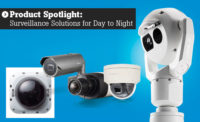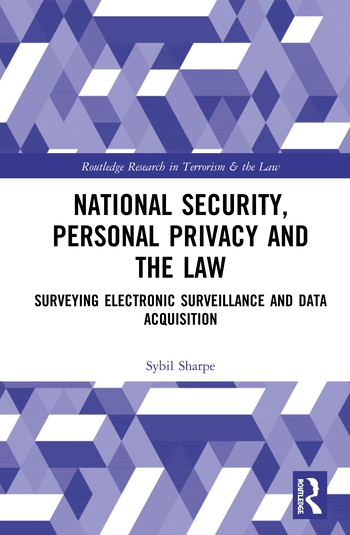Day, Night, Round the Clock


|
|
Since thermal cameras are based on heat sensors, a human body shows up clearly, even at a distance. |
In the Norton Healthcare System in Louisville, Ky., there are behavioral patients who need round-the-clock monitoring. To do so, explains Stanley Helm, security director, the rooms are equipped with security cameras. But the cameras used for years required plenty of background light in order to get clear pictures, and that meant the lights were always turned on, even when the patients were trying to sleep.
At the suggestion of a colleague, Helm decided to try day/night cameras in patient rooms in Norton’s five large hospitals. “The cameras give our patients better privacy,” Helm says. “With the day/night cameras, we can turn the lights down. The patients are less agitated.”
Day/night cameras first came on the market about ten years ago, with the goal of providing the desired color video available in well-lit situations, as well as a clear video in low-light situations, with one camera. In the past, the only option was monochrome cameras, which then evolved into color cameras before being combined into a day/night option and a 24-hour surveillance option.
Today’s day/night cameras come in a variety of options. The first decision to make is between an analog camera and network camera. Then, day/night cameras are available in standard definition and in high definition, and which option to choose will depend on the application of the camera – where is the camera placed, what type of image is the camera supposed to capture? High definition may not be the best option if the camera is going to be most heavily used in low light conditions because the sensors do not have the capabilities for those conditions right now.
Most day/night cameras are set up to toggle between color during daylight hours or in bright light and to high-resolution black and white images in low light situations. Mike Kuhn, vice president of Convergint Technologies, admits that while most people prefer to have color images to be able to tell if an intruder is wearing a blue or a red sweatshirt, for example, in most cases, the black and white images actually provide a sharper picture. He recommends that in certain situations, like in schools, it is better to set the camera to switch to the “night” image in a higher light. Color can still create a grainy image, he says, and the security director needs to decide which is more important – color or clarity.
What makes day/night cameras different from other options is the infrared (IR) cut filter. The filter expands the amount of light the sensor can receive. All cameras (even standard digital consumer cameras) filter out infrared light for daytime photos since near infrared light makes it very difficult to color correct an image, explains Ian Johnston, CTO with IQinVision. At night, there are many natural sources of IR light – the moon, stars, etc. – so using all the available light makes a lot of sense. Also, since there isn’t a lot of color information at night, the cameras will typically drop to black and white, which removes the need to correctly color correct the image.
The lenses have to be specifically chosen if they’re going to be used with IR light. Appropriate lenses are known as “IR corrected.” This is important due to the fact that a standard (non IR corrected) lens focus point for the IR light is different than the focus point for visible light. What that means is if the camera is focused at night, it will be out of focus during the day and vice versa. With an IR corrected lens, the two focus points are the same, so the camera will produce sharp images both during the day and at night. The IR corrected lenses are more expensive and usually higher quality lenses, which, of course, factors into the overall camera price.
IR illuminators are often used to extend the amount of light available to the camera, without having the entire scene be really bright to the eye. Sometimes they’re used for covert purposes where you don’t want to advertise the fact that you have a camera, but most often they’re used so they can see in dim lighting conditions, without annoying anyone that may be in view of the scene.
IR illuminators, however, are tricky to work with, especially outdoors. Like a flashlight, either the field of view that is illuminated is restricted, or an extremely bright IR illuminator is necessary to light up a wide field of view.
When your team is setting up the cameras, it’s important to realize that no scene is ever constant. The lighting will change throughout the day as the sun moves, so the installation needs to consider the different light patterns. Also, the lens should be properly focused so the image remains clear when it toggles between day and night. During the day and the camera is in the color mode, that picture will likely be good enough and could be enhanced if needed. However, that might not be the case when it toggles to black and white. Therefore it’s best to physically align the cameras during nighttime mode to get the best picture quality.
Technical and Customer Perception
Challenges in choosing and installing day/night cameras can be broken into two areas: technical challenges and customer perception or expectations.
Technical challenges include sensors, pixels and lenses. Really small sensors with sub two micron pixel elements just aren’t that good at capturing a ton of light.
The only way to get more light into the pixel is by leaving the shutter open longer. However, just like with a ‘point and shoot’ camera, any movement while taking the picture results in motion blur. In order to have a sharp picture, shutter speed should be around 1/30th of a second. For day/night cameras in the low light mode, the sensors may drop down to 1/5th or even ½ second or longer to allow them to gather more light. That long of an exposure will create a ‘ghostly’ image that is completely unrecognizable.
Lenses for security cameras have also been affected by the current trends in photography. Due to cost reductions and cameras becoming more compact, today’s lenses are pretty small and don’t gather much light. Good image quality stems from having a good lens. The lens is the most neglected part of the solution. It is also the easiest cost to reduce.
As for challenges surrounding perception, TV, movies and other media have skewed expectations. Ask someone about a day/night imaging, and the expectation is a solution using the same technology used by the military where you can literally see in the dark, or near zero light conditions. That technology is available, but not in the price range most organizations want to spend on camera security systems. For most situations, it’s important to have good night images, no motion blurs and spend a few hundred dollars. It’s possible to meet two of those specs, but rarely all three, simply because the system many people would like to have doesn’t fit into the budget.
Ron Aguiar, director of safety and security at Southeast Christian Church in Louisville, Ky., needed to address these issues as planned the security network for his facility. The property sees activity from 5:00 am to midnight most days, and Aguiar needed cameras that could record night activities. He began installing the cameras when the church moved to the property twelve years ago and continues to add cameras to the system. As the technology developed, he decided that day/night cameras were his best option.
“We add a few cameras every year to better our security plan, and when we do, the new cameras are always better than the previous year’s cameras,” Aguiar says.
His security concerns include 50 acres of parking lots and more than one million square feet of indoor space. The cameras are placed in areas where there is a lot of people movement, including entrances, the sanctuary, and the rooms where the children services are held. When he began replacing cameras with day/night systems, Aguiar found he didn’t have to relocate the vast majority of the cameras because of the improved technology to react to light and darkness. He does note that the day/night technology allowed him to add cameras in new locations inside the building, in areas where he didn’t have cameras in the past.
With the volume of cameras used on the property, cost is a concern for Aguiar; however, the improved technology has made day/night cameras more easily affordable.
Choosing Thermal
Day/night cameras that use IR illumination and IR sensors are an improvement over options that were available in the past, particularly in areas where there is a need for 24-hour surveillance. But IR illumination isn’t the only option on the market. Thermal cameras also provide high-quality day/night images, but by using a different technique.
Thermal cameras sense energy in a longer wavelength of light than other camera types, according to Andy Teich of Flir. The images the thermal cameras create are generated from heat instead of light. Because of that, the images the cameras project are very different from light-based cameras. There is no color option. Instead, the images are in black and white with figures having a ghost-like quality to them. While the resolution is actually quite good, it looks different from light-generated imaging because of the heat energy.
There are some very important capabilities that come with thermal cameras that aren’t found with other types of cameras. The first, and perhaps most important, is thermal cameras need zero light to create an image – a plus for situations where adding artificial light isn’t an option. Second, thermal cameras can create images through any condition, such as dust, smoke, fog, rain, or snow. Third, thermal cameras can “see” very long distances – up to 10 to 15 miles away.
When would thermal cameras be the option over more traditional day/night cameras? They should be considered in situations where there is no light, where obstructions like fog or dust regularly blocks camera images, or one camera needs to cover a very large area or capture images approaching in the distance.
Today’s day/night cameras have become the standard in security camera systems, according to Dan Kloenne, security integration manager with Ready Electric Company. That’s largely because of the improvements in technology have made the camera price more competitive with other options. However, Kloenne doesn’t discount other ways the day/night cameras save money. Before day/night cameras, he told customers that the best way to get sharper pictures was with increasing light sources. That meant more light installations in warehouses and parking lots. The day/night cameras decrease that need for extra light source.
However, just because day/night cameras are the new standard doesn’t mean they are always the correct choice for a security system.
The bottom line? Before purchasing a day/night camera security system, see the camera in real-life situations whenever possible – preferably in conditions similar to where you will put it – to judge the image quality and determine if the system is the right one for your needs.
|
Day/Night/Low/Light Cameras: Six Things To Consider… 1. The lens is the most important part of the camera, but the better the lens, the more expensive the camera system. 2. Try out the camera in real-life situations before purchasing. It’s most important to know how the day/night camera will work in low light similar to your circumstances. 3. Consider camera placement. Evaluate the light around the area of the camera. Also consider how the sunlight changes throughout the day and different seasons of the year and how that will affect the camera’s imaging. 4. Do not place a day/night camera in areas of total darkness. The IR illumination needs some light to work best. 5. Consider adjusting the camera to go into night mode before it is totally dark. 6. Do not forget other conditions that could affect camera imaging, such as poor weather, fog, or smoke. |
Looking for a reprint of this article?
From high-res PDFs to custom plaques, order your copy today!








